黄果树大瀑布天星桥景区入口游客中心
中规院 + 清水爱派
项目背景
黄果树风景名胜区(简称“景区”)位于黔西风景旅游环线和贵阳-安顺-兴义风景旅游带的交汇处。1982年,景区便入选成为第一批国家级风景名胜区,2019年又被列入世界遗产预备名录,可谓闻名遐迩。随着近年来游客量激增,景区游览场地及现状设施已经难以承载每年数千万的接待人次。因此,对于景区基础设施的全面优化提升势在必行。
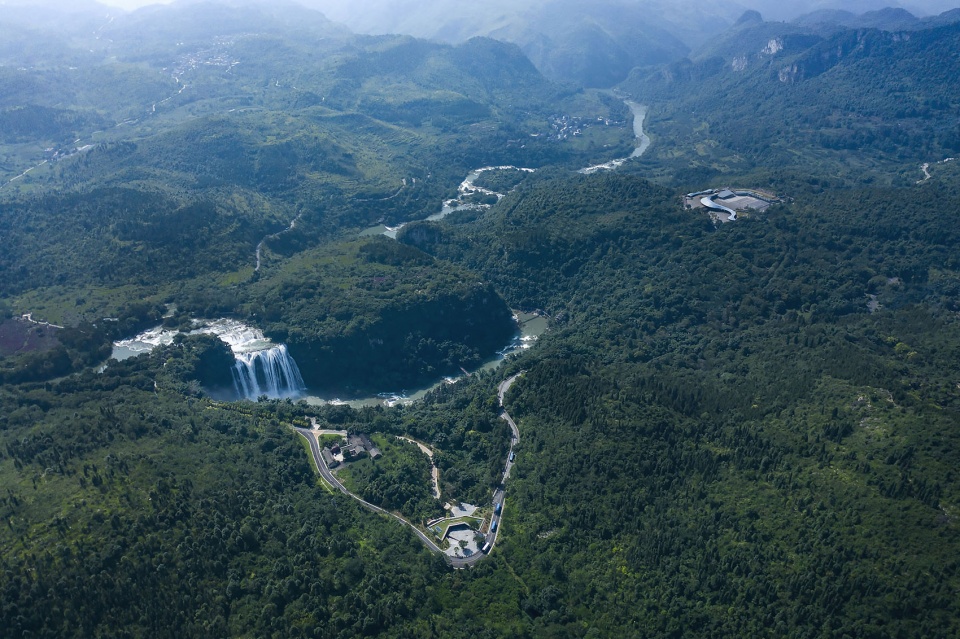
作为景区基础设施提升的重点工程,本项目着力将黄果树两大核心景区——大瀑布、天星桥的入口区域进行全面改造升级,优化游客中心功能及游览组织模式,满足新时期黄果树游客服务需求。
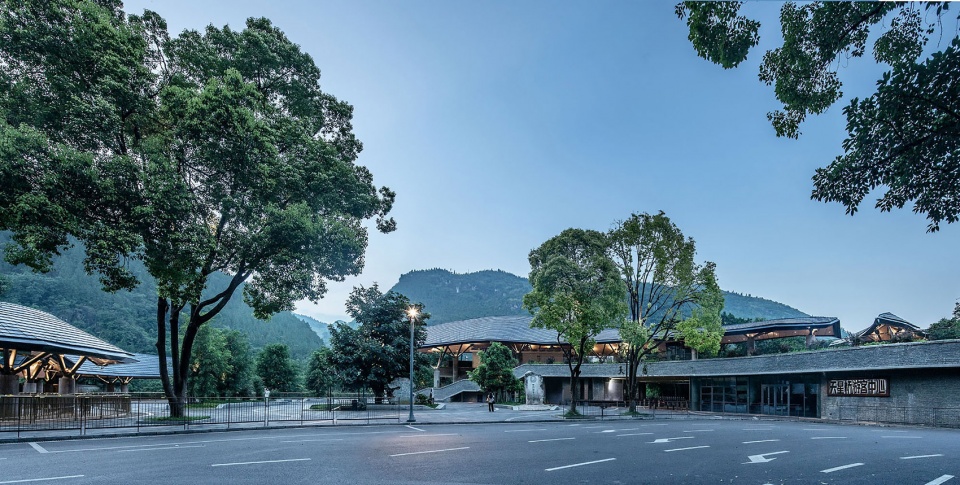

现状问题
大瀑布景区是黄果树的最核心区域,也是家喻户晓的打卡胜地。随着近年流量增大,景区设施已远远无法满足游览需求,景区管理者迫切需要解决以下矛盾:①增强入口集散及服务功能;②优化入口交通游线组织;③营造游赏初始景观意向。
改造前,景区入口前广场空间狭促,各类交通混杂,单向行驶的接驳大巴落客上客区与景区出入口位置完全相反,游客集散场地又被接驳大巴停车场挤压,从而造成接驳大巴、出租车与社会车辆的混行。在旅游旺季,单日游客限流仍可达五万人次的情况下,很多时候只能依靠工作人员拉人墙来维持乘车秩序。
此外,原有卫生间面积总共不过五十平米,男厕女用已成常态。场地南侧村民经营的餐饮街,烟囱招牌油腻凌乱,加上肆意穿行拉客带来的安全隐患让本就混乱的交通局面更加恶化。
▼大瀑布景区现状分析,Site analysis – Waterfall Scenic Area © 中规院+清水爱派
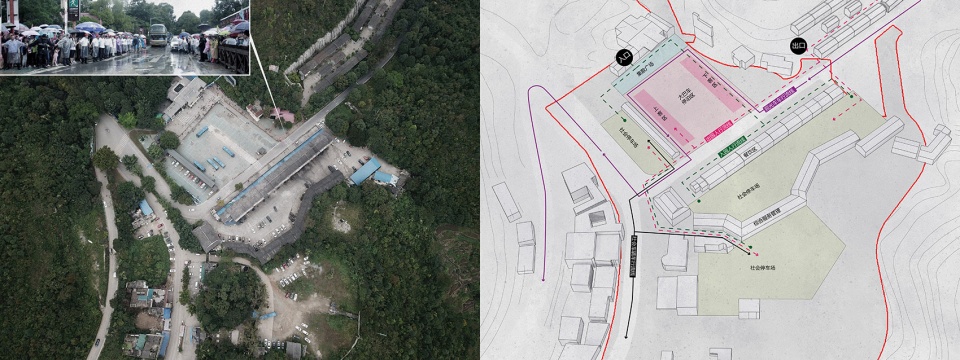
The Great Falls is the core area of the scenic area and A well-known must-go spot. With the increase in traffic in recent years, the facilities in the scenic area have been far from meeting the demand. The basic demands of first party, who has been troubled for years, have clarified the main contradiction points: ①Enhance entrance distribution and service functions; ②Optimize the organization of entrance transportation routes; ③Create the initial landscape intention for sightseeing.
Before the upgrade, the area of the entrance square was too small, and vehicles were mixed. The one-way shuttle bus drop-off and pick-up area was completely opposite to the entrance. The tourist distribution area was also squeezed by the shuttle bus parking lot. In the result, shuttle buses, taxis, and social vehicles mess up together. In the peak tourist season, the flow of tourists per day is less than 50000, so the staff have no choice but to pull a wall staff to maintain order.
In addition, the total area of the original bathroom is only 50 square meters. The restaurant street operated by villagers on the south side of the site has greasy and messy chimneys, as well as potential safety hazards caused by soliciting customers. All of those problems are exacerbating the already chaotic traffic situation.
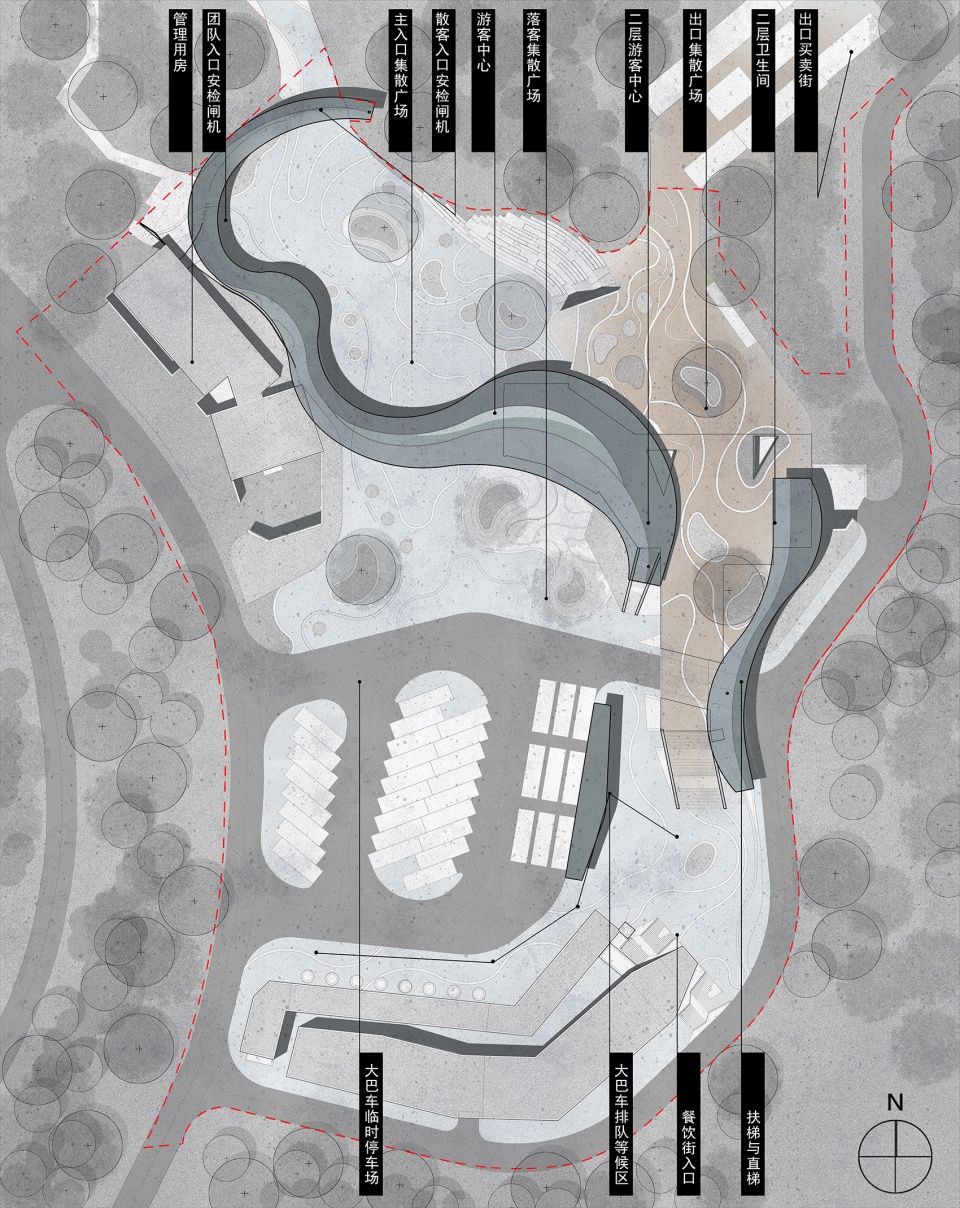
重塑场地 优化流线
为解决上述问题,景区规划通过新建道路、设置卡口等方式禁止社会车辆、旅行社大巴进入核心游览区域,保障核心景区接驳游览车辆顺畅运行。
规划与设计团队经多轮讨论后,决定采用顺应环境、借势分流的方式来解决各流线之间的交通问题,以流线带动功能分布。由于景区出入口位置与车行流线相反的现状无法更改,为了解决进出人行流线交叉的问题,通过分析原有地形地貌,利用景区出口高于入口五米左右的现状,使高差形成两条立体游客流线,前来接驳车辆在底层落客区落客后环绕停车区排队等待高处回程游客,使进出人流,车流完全分离不再冲突。

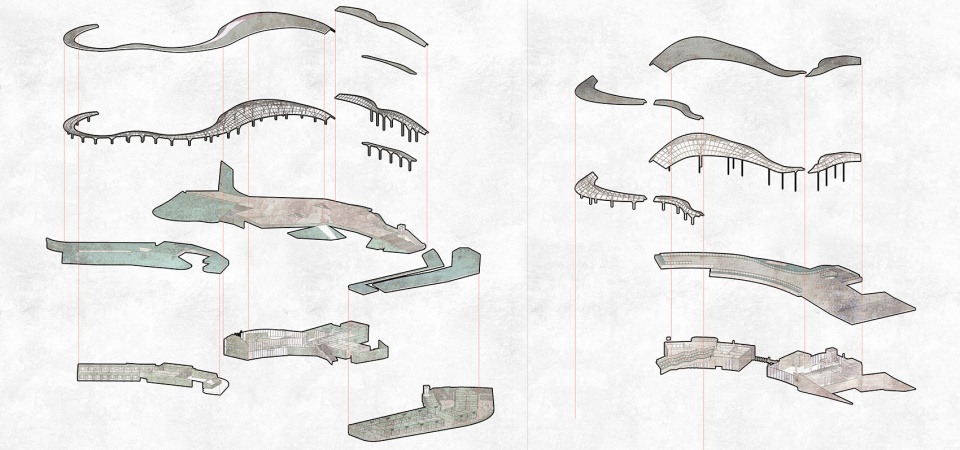
To solve the above problems, the scenic area planning prohibited the social vehicles and travel agency buses from entering the core scenic area by the way of building new roads and setting up toll gates, and guaranteed the smooth running of the core scenic area buses.
After many rounds of discussion, the design team decided to adopt an environment-oriented, opportunistic diversion approach to solve the traffic problems among different flow lines, and to drive the functional distribution with flow lines. As the location of the park entrance and exit is opposite to the vehicular flow line and cannot be changed, in order to solve the problem of crossing the incoming and outgoing pedestrian flow lines, by analyzing the original topography, taking advantage of the situation that the park entrance is about five meters higher than the entrance, the height difference forms two three-dimensional tourist flow lines. The vehicles for inbound passengers arrive at the bottom pick-up area and then wait in line in the parking area for the returning tourists on the high place, so that the pedestrians and vehicles are completely separated and no longer conflict.
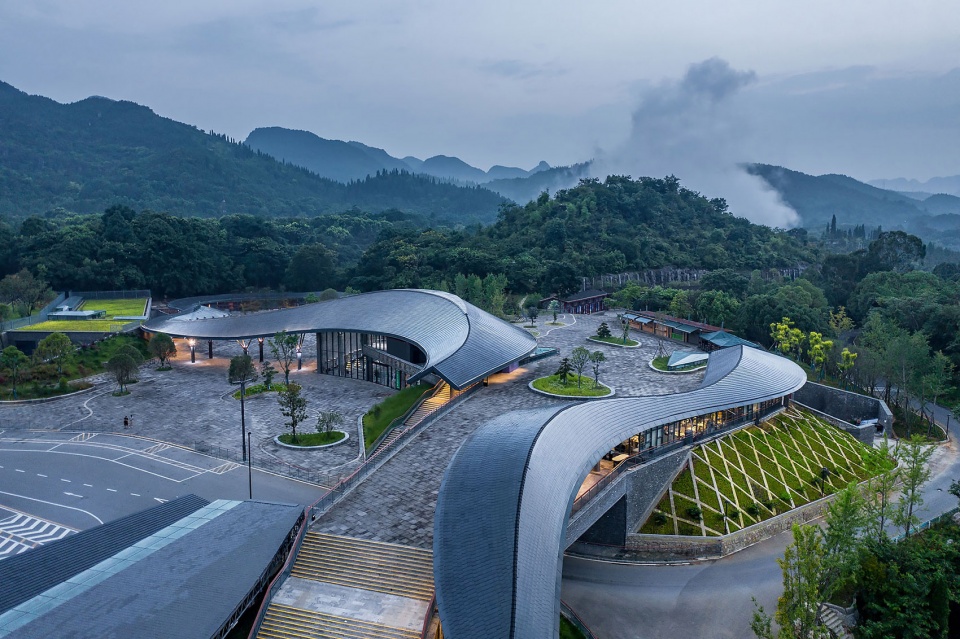
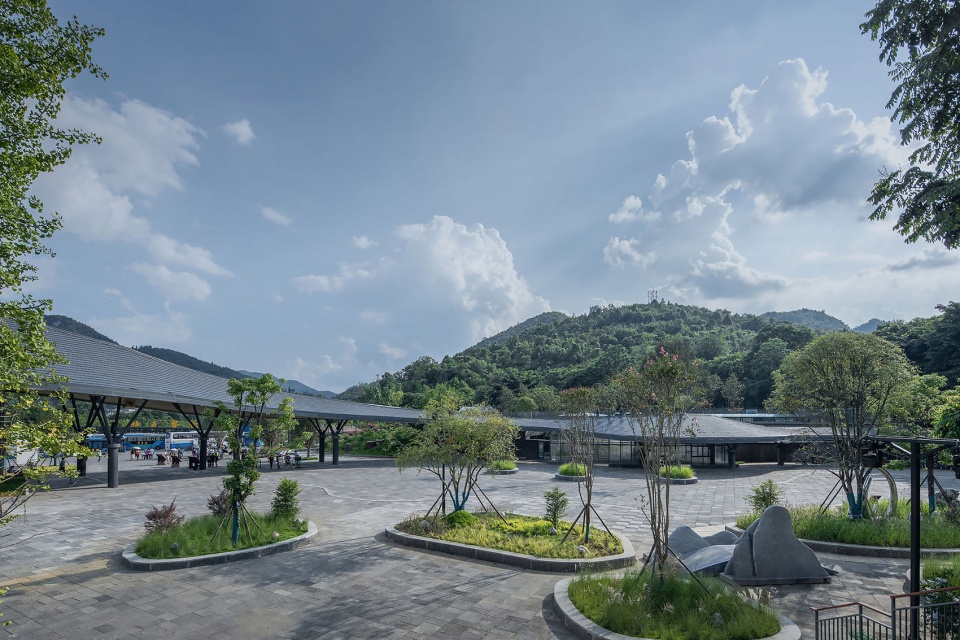
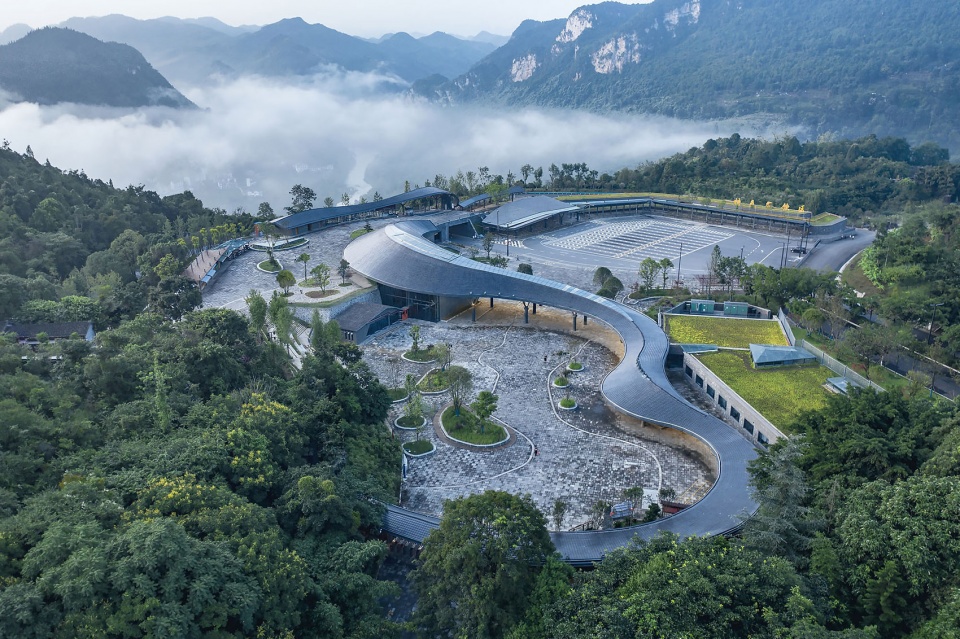
游客中心通过覆土建筑的形式将主体功能隐入绿坡,游客中心、管理用房、回迁餐饮三大部分功能分别设置在流线两侧和末尾,既注重原有地貌,又将土方工程做到最小。
通过人流高差将接待、票务、问询、餐饮等功能分层而设,出入人流在分层进入游客中心,每层都设置多处卫生间以解决曾经的排队难题。原餐饮服务调整至返程出口区域,以覆土景观的建筑形式将其隐于地下,一方面把入口宽度限制减少拉客的影响,另一方面避免与乘车流线交叉。
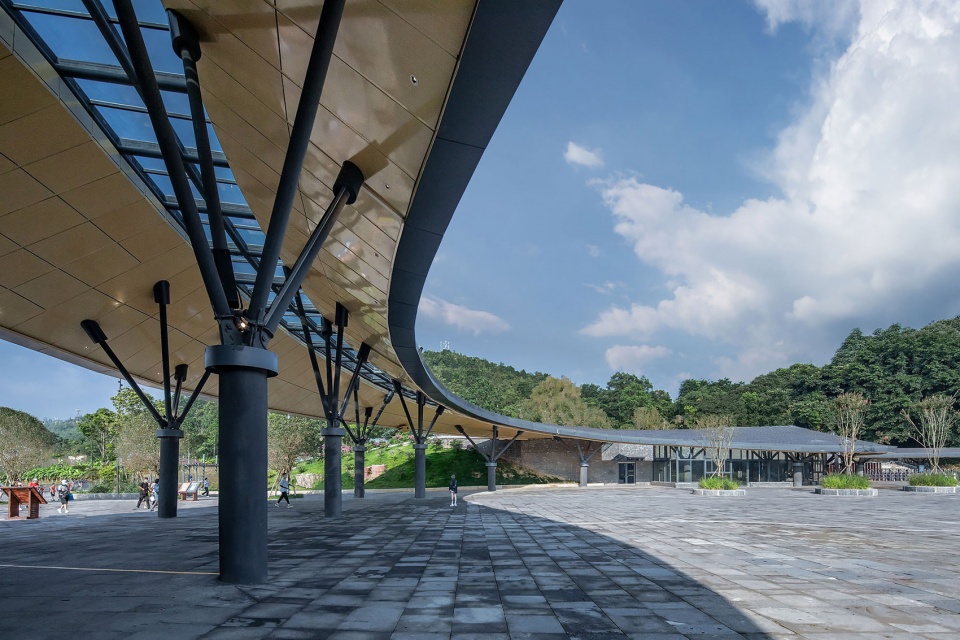
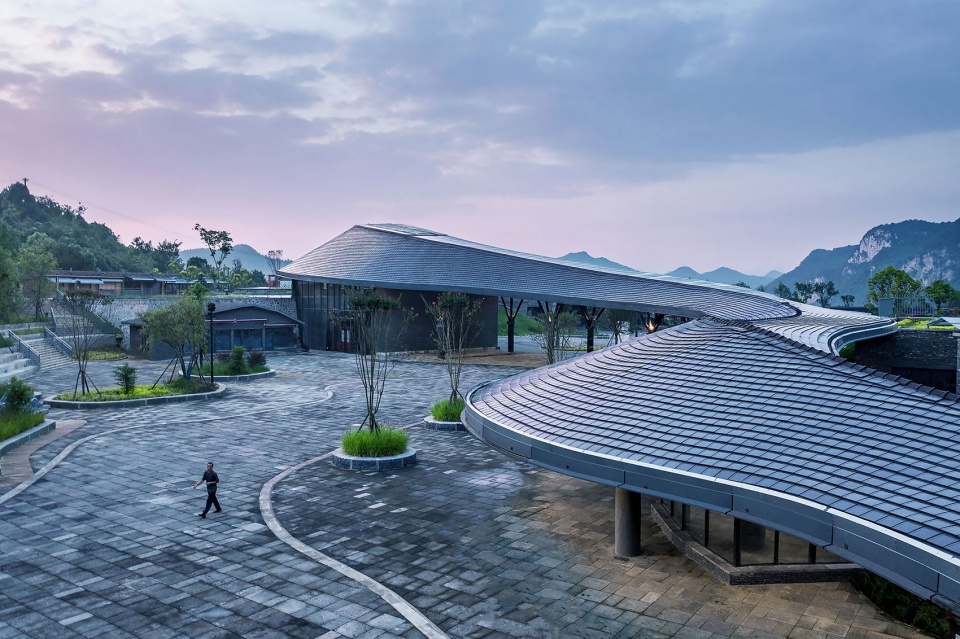

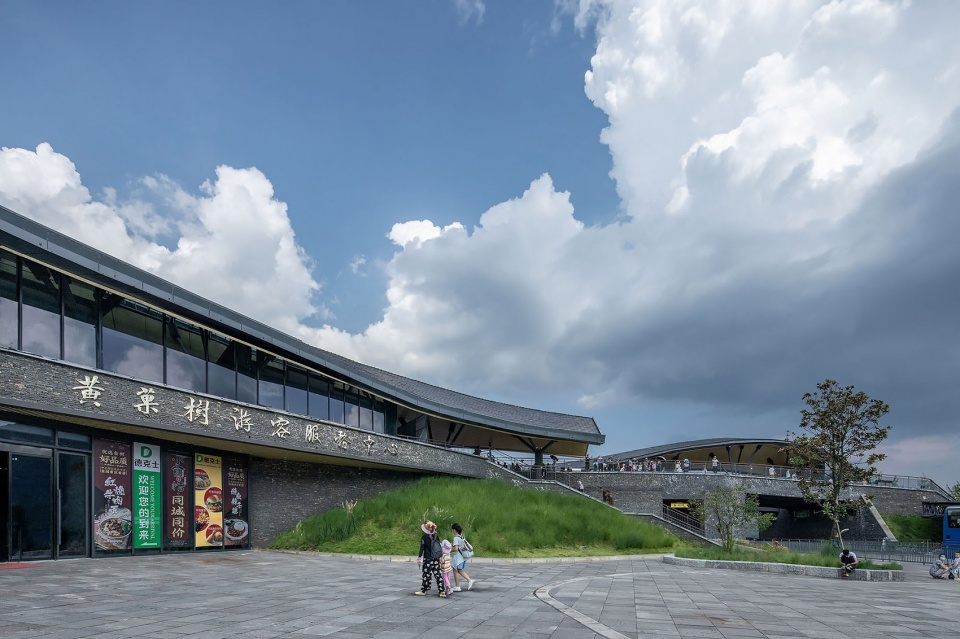
山水之意 天地相融
游客中心是游客游赏序列的第一印象,规划整体理念顺应白水河山水之势,以有机流动的线条凝练瀑布、山麓、流水等地域自然形态,取山水之势融入自然,建筑设计提取当地乡土民居砌筑方式,无论是造型还是材料都融合了当地一山一水一砖一瓦的气息。
进出游径由两条近四百米长的石板瓦片坡屋顶蜿蜒覆盖,形态呈白水河涌动之势,与传统建筑的棱角分明不同,此次设计将天际线留给了起伏的山峦,消解建筑体量并与周边自然环境融为一体。
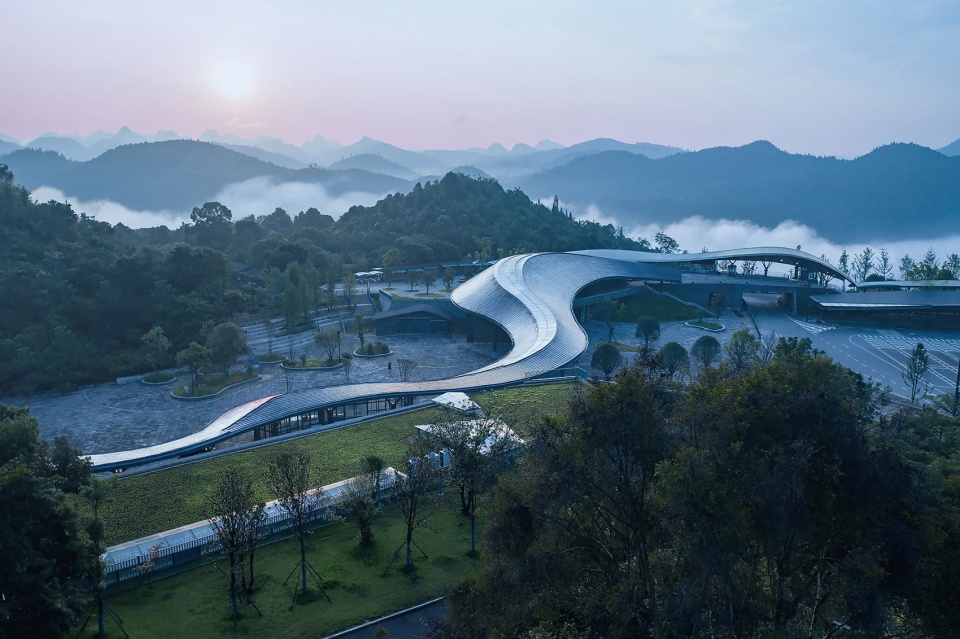
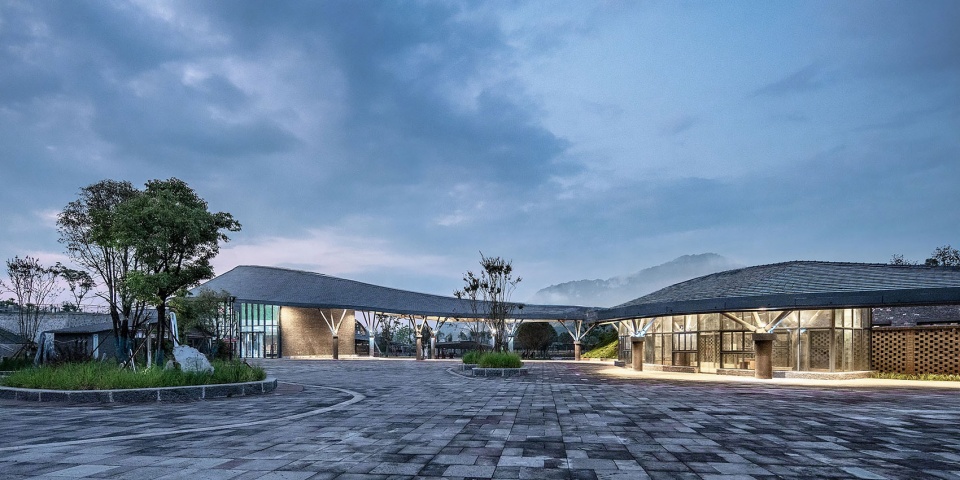
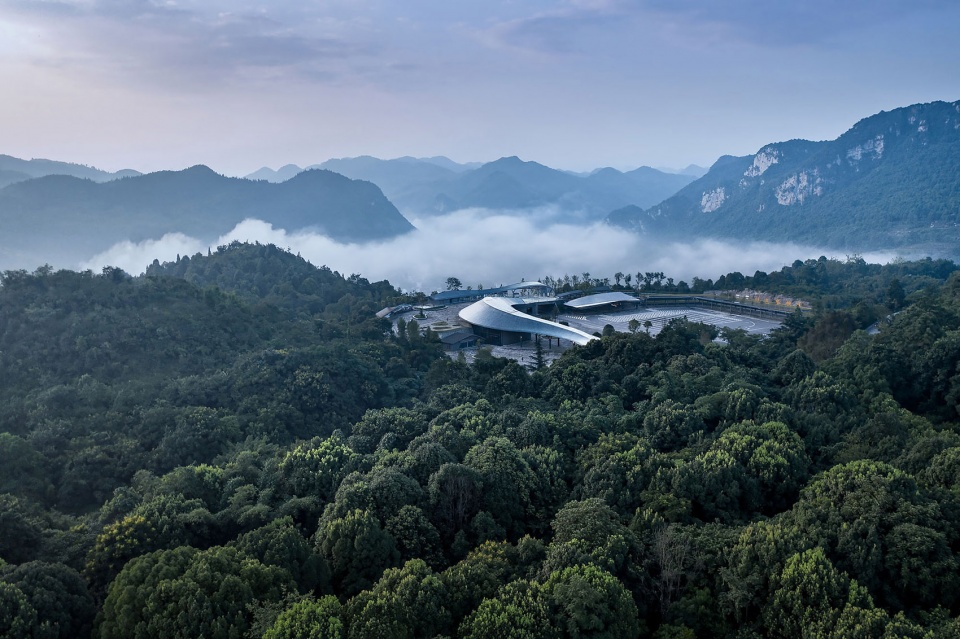
现状问题
天星桥同样是黄果树核心游览区域之一,其自然景观以“多彩奇幻,玲珑秀美”著称,也是西游记取景地。随着景区发展,入口区域功能不足、交通混杂、风貌脏乱等问题日益显现,景区管理者希望通过对天星桥入口区域的整体改造提升,强化对入口及周边风景资源的保护、优化游览枢纽的交通组织、提升游客中心服务水平、加强入口景观的观赏体验,让其功能为游览服务、让场地融为风景。

The Tianxing Bridge is also one of the core scenic spots of Huangguoshu, which is famous for its colorful and magical beauty and is also the shooting location of Journey to the West. With the development of the scenic spot, the problems of the inadequate functions in the entrance area, the traffic congestion and the messy style are increasingly prominent. The scenic area managers hope to upgrade the whole transformation of the Tianxing Bridge entrance area, strengthen the protection of the entrance and surrounding scenery resources, optimize the traffic organization of the tour hub, improve the service level of the tourist center and enhance the viewing experience of the entrance landscape, so as to make its functions serve the tour and melt the site into the scenery.
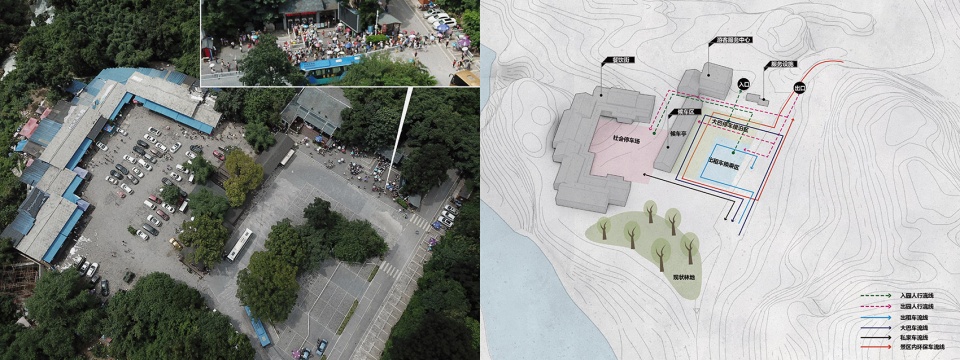
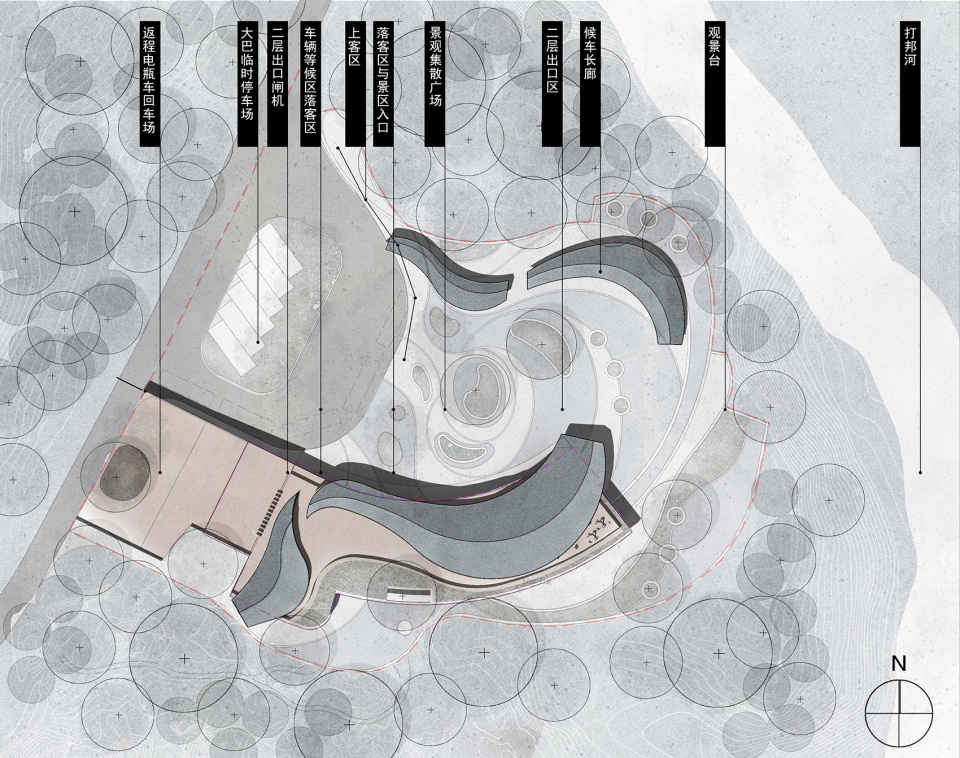
净化交通 功能升级
通过场地清理,疏解对生态环境影响较大的传统餐饮功能,腾出空间用于升级入口导览问询、科普展示、休憩茶歇等多元服务功能。交通组织方面,利用游客出口与入口之间四米左右高差形成立体交通,接驳大巴单行环线不再与上下客区交叉,进景区人流从一层大厅进入,出景区人流通过屋顶离开,以立体交通形式解决出入人流与车流交叉冲撞的矛盾。结合出景区流线设观景平台,并延平台设置餐饮,增加停留的可能。整条流线仍覆盖蜿蜒坡屋面,保证进出检票、候车区遮风挡雨功能同时呼应山林河水之势。

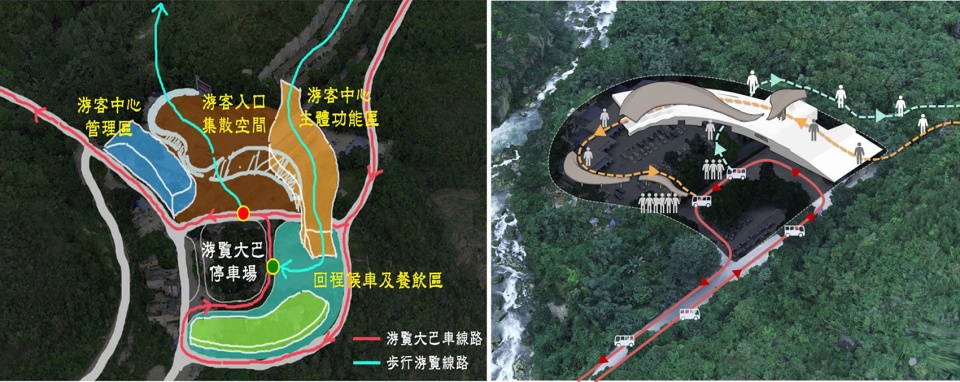
Through the cleaning of the site and the alleviation of the traditional catering functions that have a great impact on the ecological environment, space is freed up for upgrading entrance guiding, inquiry, popular science display, rest tea break and other diversified service functions; In terms of traffic organization, the four-meter height difference between the exit and the entrance is used to form a three-dimensional traffic system, and the shuttle bus single ring line will no longer intersect with the upper and lower passenger areas. The inflow of people into the scenic spot enters the first floor hall, and the outflow of people leaves through the roof, thus solving the contradiction of cross collision of people and vehicle flow in three-dimensional traffic form. Combined with the outward flow line, the viewing platform is set up, and the catering is set up on the extending platform to increase the possibility of staying. The whole flow line still covers the winding slope roof, ensuring the function of wind and rain protection in the entrance and exit ticketing and waiting area, while responding to the trend of mountains, forests, rivers and water.


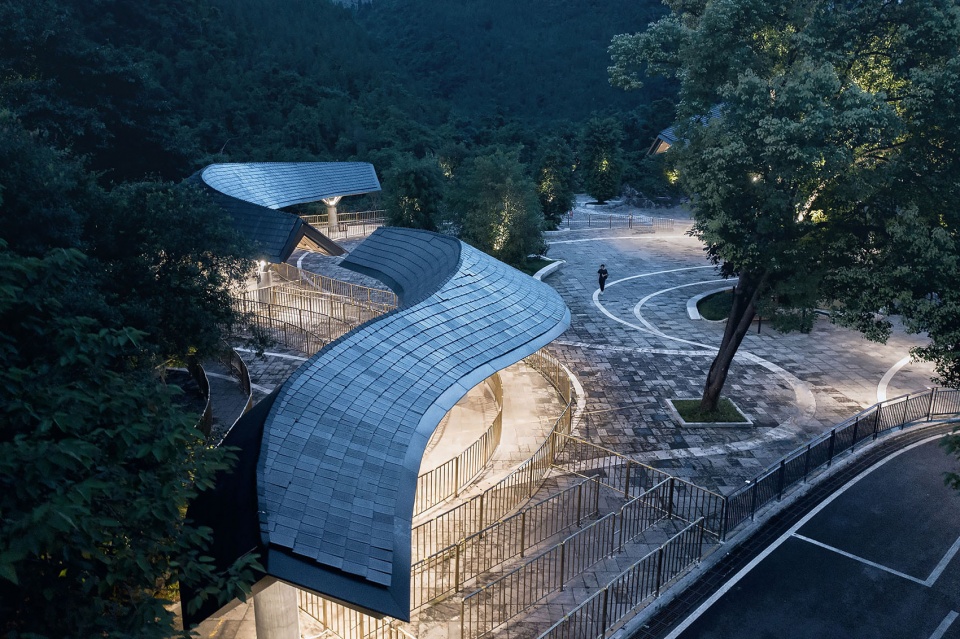

水乳交融,石林共生
建筑设计特色在于完整的屋顶系统设计,屋面整体呈山水流动之势与景观设计融为一体,局部呈飞檐灵动之态。景观设计灵感来源于天星桥景区独有的自然风光特色,古有诗云“芳菲扑面羞,幽碧满园收。立石擦双耳,绕藤拂百头。”此次设计以绿岛为“林”、以铺地为“水”、以建筑为“石”,营造出山水交融、石林共生的整体景观意向。设计及施工的过程中,保留场地内所有现状乔木,并融入到新的景观与建筑设计当中,打破建筑与景观割裂对立的关系,使其空间融合、功能互动、情景交融,通过特色景观与建筑的结合,营造出“听泉”“望渊”“归林”三个观景主题,给予游客以不同层面的观感体验。
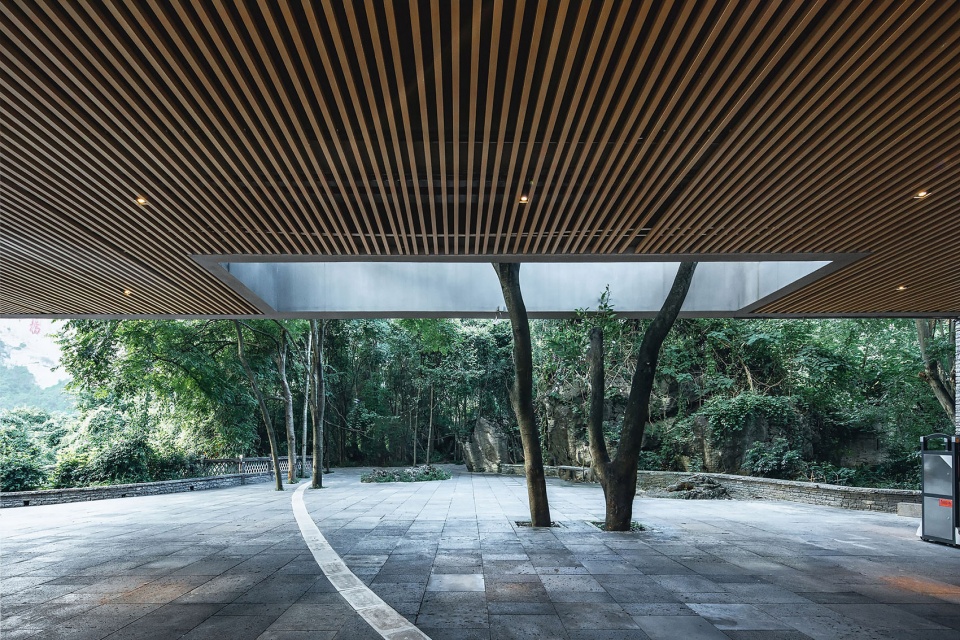

建筑材料
大瀑布和天星桥景区大部分建筑体量通过覆土形式消隐于场地,为主要流线遮蔽的屋顶均采用的石板瓦,来源于本土民居“石头房子”的石板屋顶,建筑立面同样采用民居所用青石块砌筑,总体延续了地域文化特色,在蜿蜒之间与淡淡乡愁编织在一起。
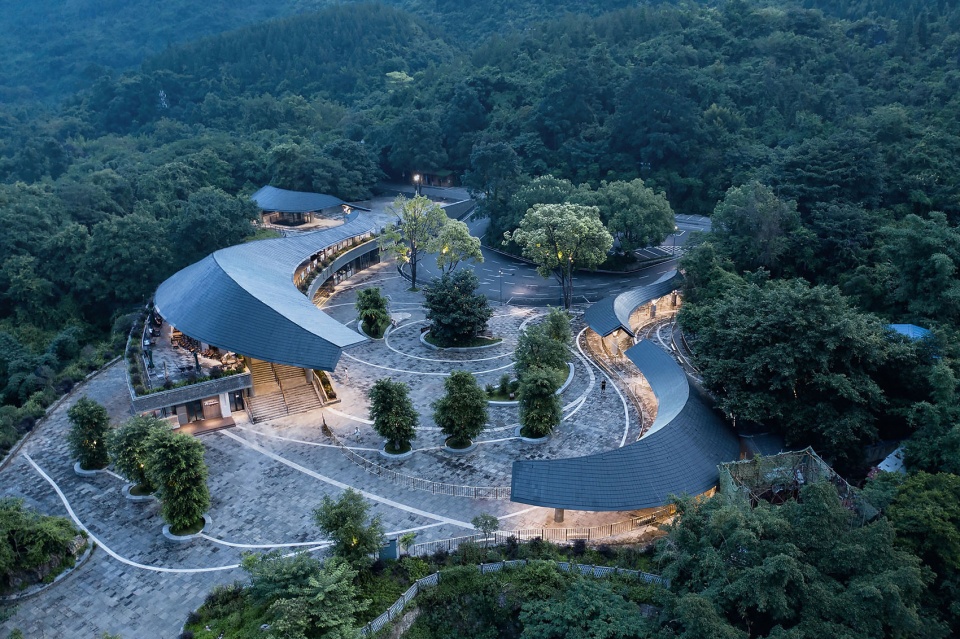
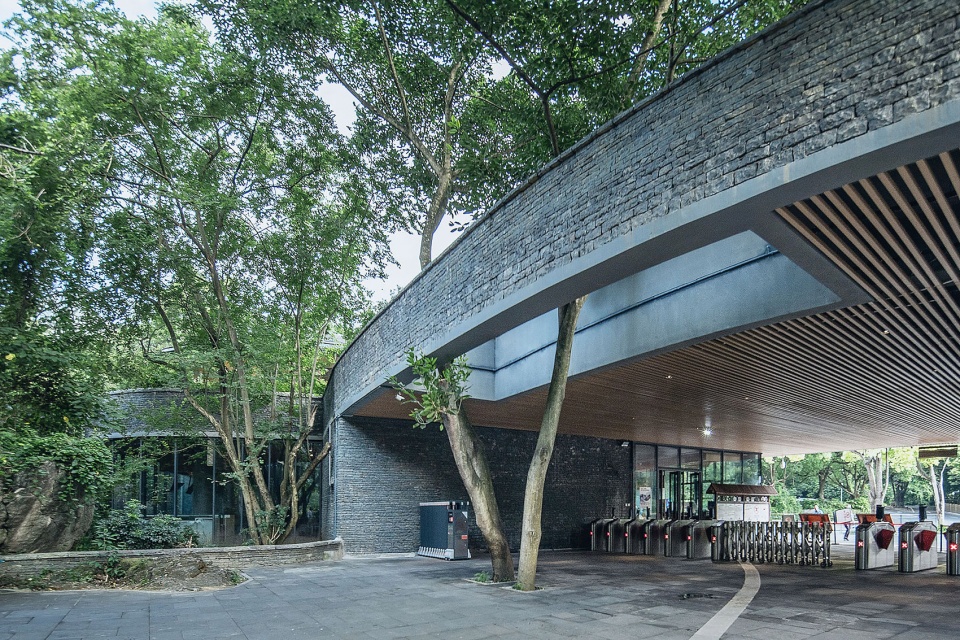
结语
黄果树大瀑布是全国最具代表性的景区景点之一,其现状面临的一系列问题,是我国风景名胜区在新的发展阶段面对优化转型发展的缩影。
项目团队从2018年接到任务,历经三年的时间,整合规划、建筑、景观等多个专业,伴随景区从区域规划到设计施工,以统筹视角完善功能布局、梳理交通流线、优化景观体验,解决了困扰该景区长期以来的功能短缺、交通混乱、安全隐患等一系列问题。
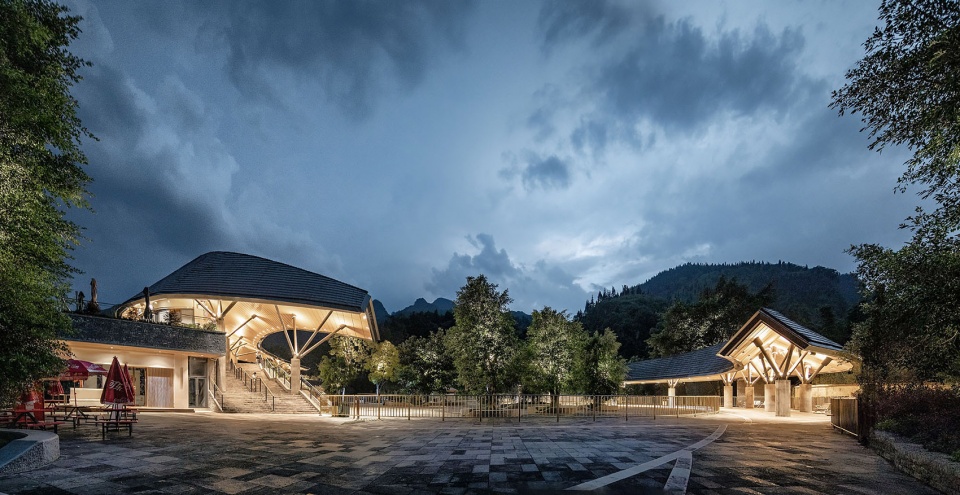
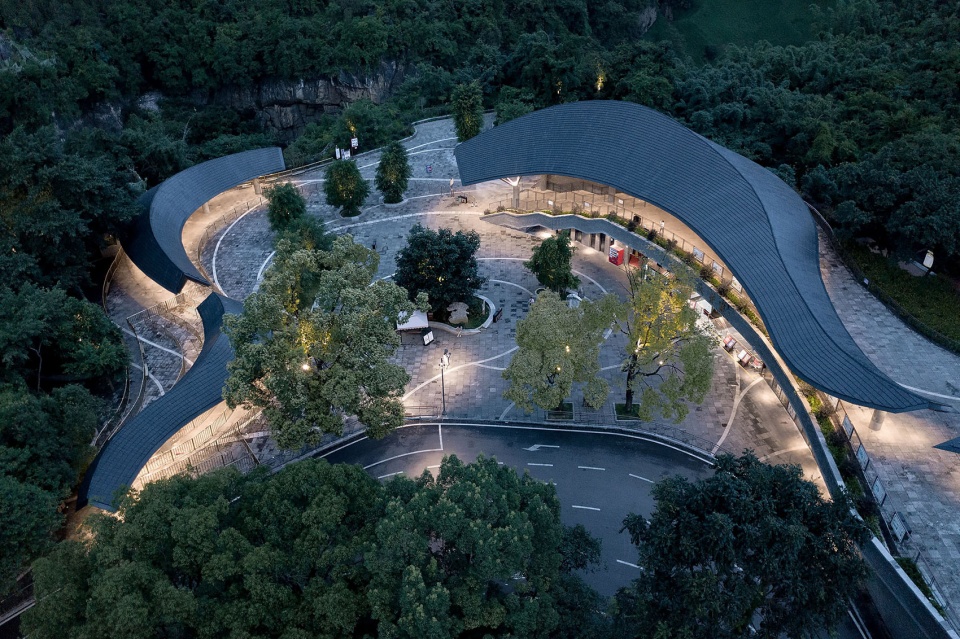
两处游客中心在2020年投入使用后,广受游客及景区管理者的好评。其以入口空间为纽带缝合天地山水,将建筑嵌入自然之中,成为黄果树游览序列美妙的伊始。

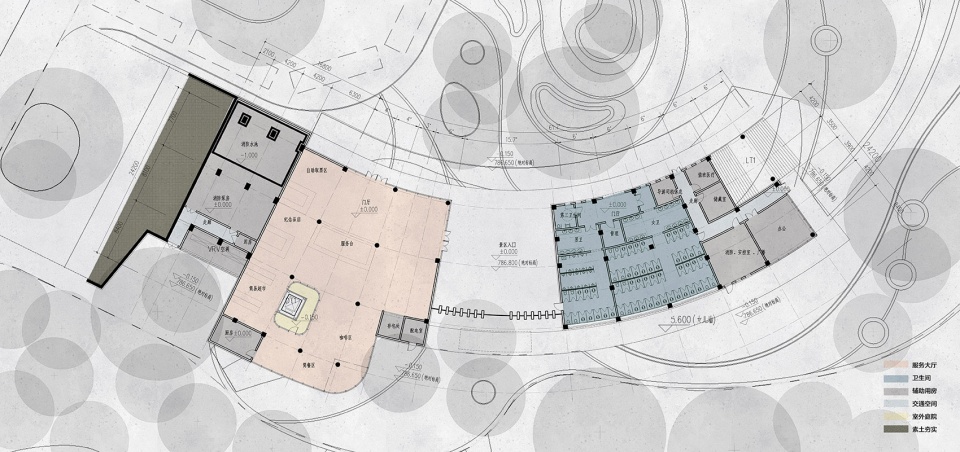
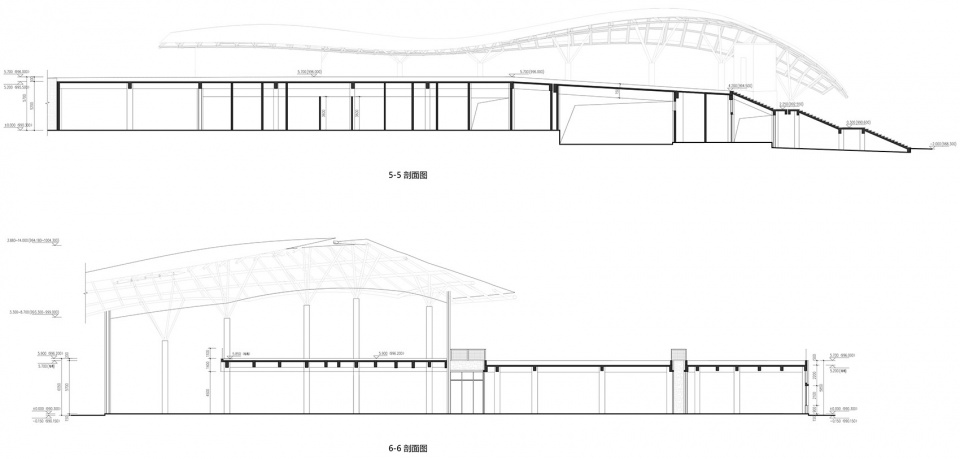

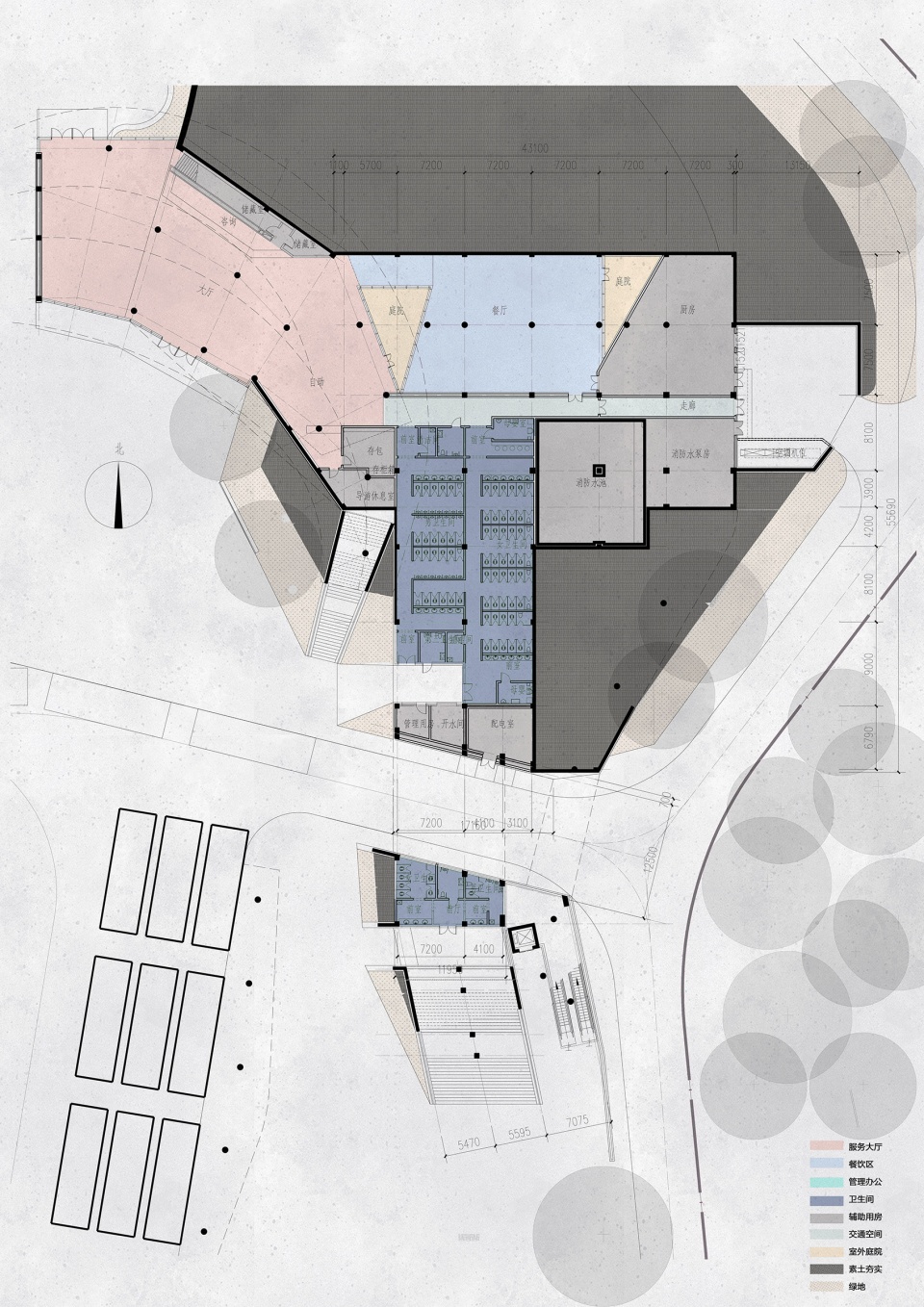
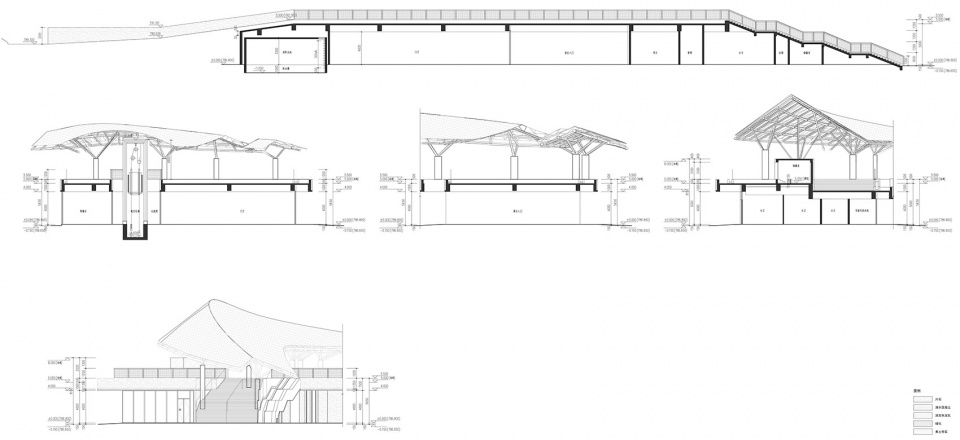
项目名称:黄果树大瀑布/天星桥景区入口游客中心
建筑事务所/公司/机构/单位:中国城市规划设计研究院+北京清水爱派建筑设计股份有限公司
事务所/公司/单位网站:www.caupd.com / www.tsc.com.cn
联络邮箱:caupd@caupd.com / tsctsc_sc@126.com
公司所在地:北京
设计时间:2018
建成年份:2020
建筑面积:大瀑布6900㎡/天星桥1800㎡
项目地址: 贵州
项目参与者
项目名称:黄果树大瀑布/天星桥景区入口游客中心
项目业主:黄果树旅游区规划建设管理局
设计单位:中国城市规划设计研究院、清水爱派建筑设计股份有限公司
设计时间:2018年-2019年
建成时间:2019年-2020年
项目地点:贵州省安顺市镇宁布依族苗族自治县黄果树风景名胜区
规划主持:王忠杰、刘宁京
建筑主持:刘晏晏、张灿
景观主持:孙培博、束晨阳
设计团队:郝钰、肖灿、王婉颖(规划、景观)尹晋、温思璇、潘晓丹、宋昌华、王亮(建筑)姚岳亮、艾芷伊、洪贤婷、刘丰易(室内)
施工图团队:杨欣、诸立昌、车立杰、李宝东(建筑)隋艳华、徐盛杰、朱宣宇(景观)颜雪洲、孙文(结构)罗四维(暖通)解正涛、张冰、张晓琦(电气)周亚林(给排水)
驻场设计师:刘丰易、李宝东
照明设计:北京宁之境照明设计有限责任公司
幕墙设计:北京佑荣索福恩建筑咨询有限公司
BIM设计:北京百特绿源工程设计咨询有限责任公司
摄影师:王子凌
More:中国城市规划设计研究院 + 北京清水爱派建筑设计股份有限公司
扫描二维码分享到微信